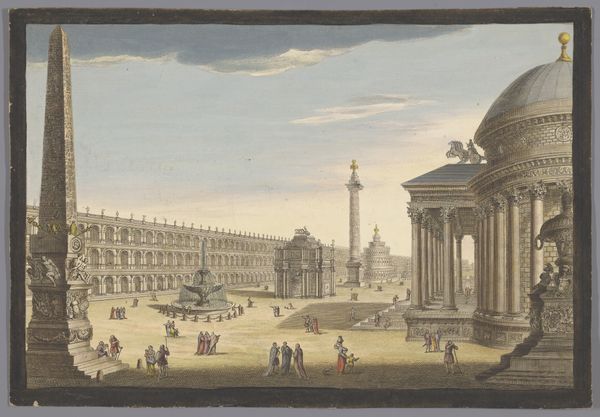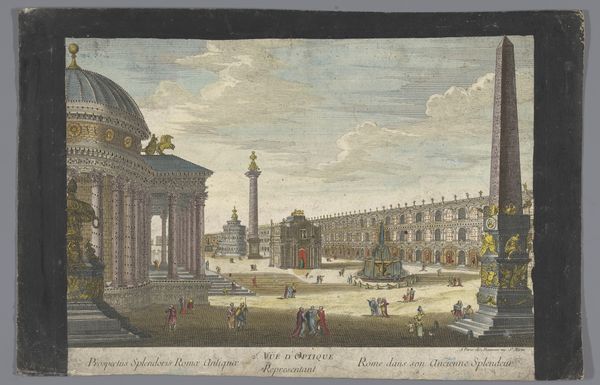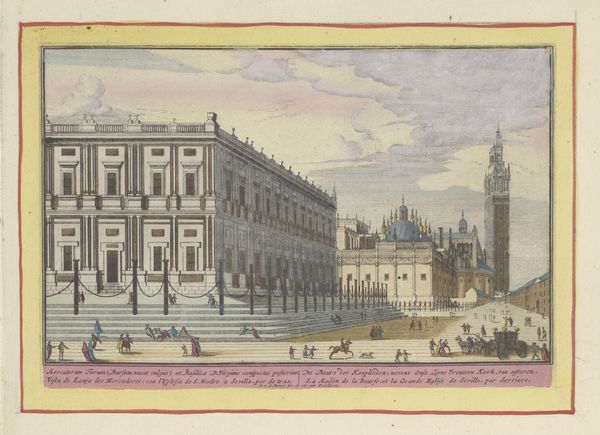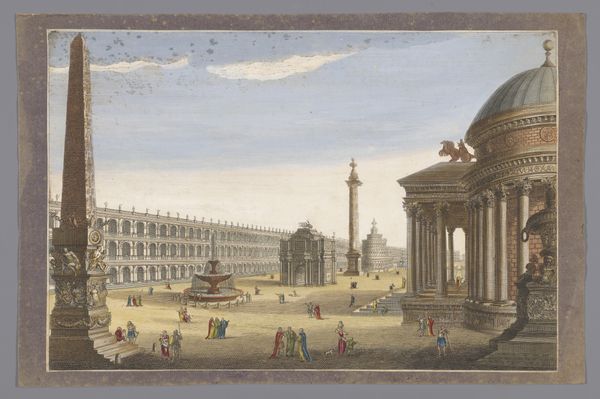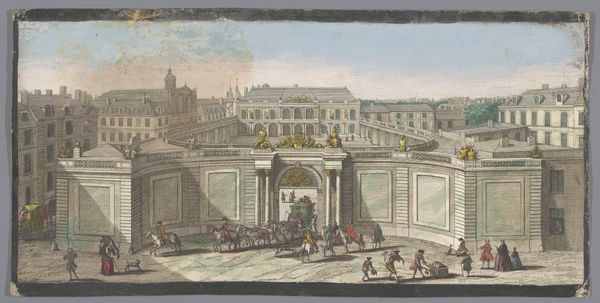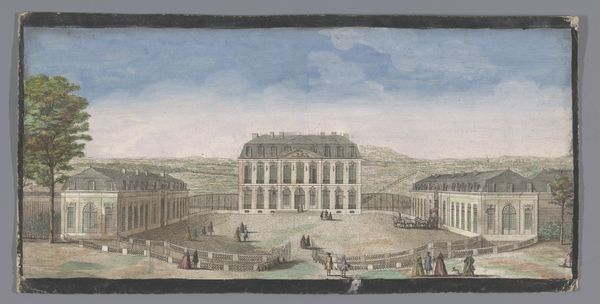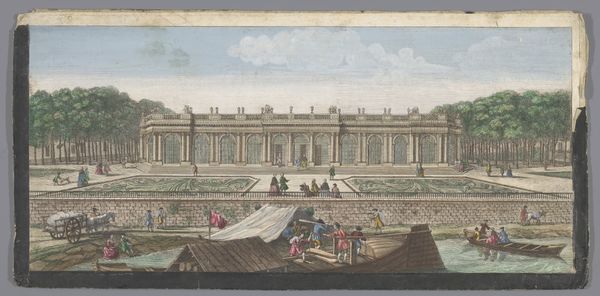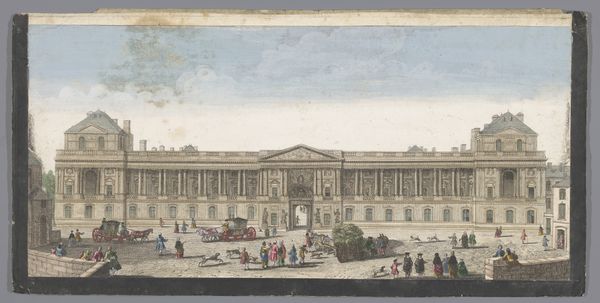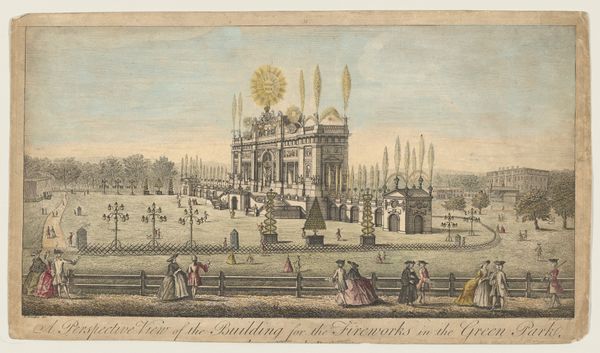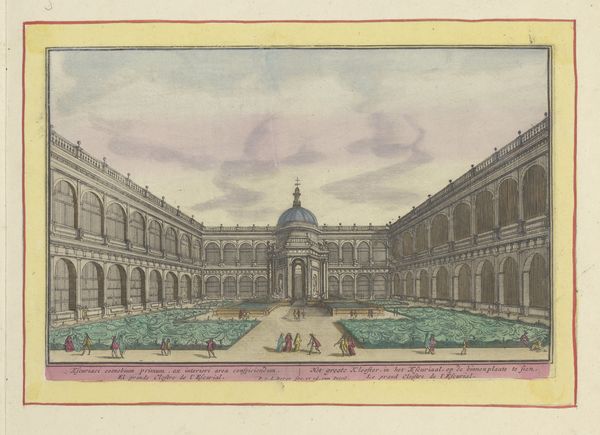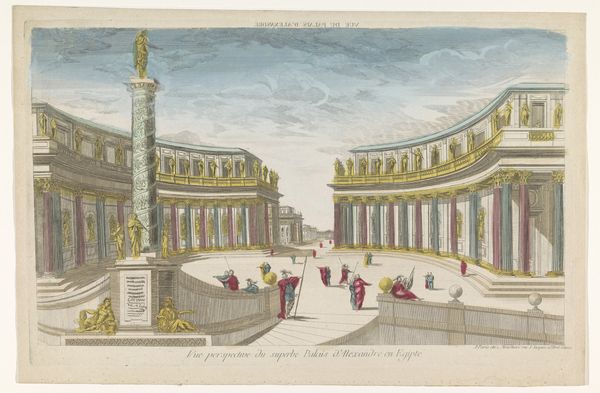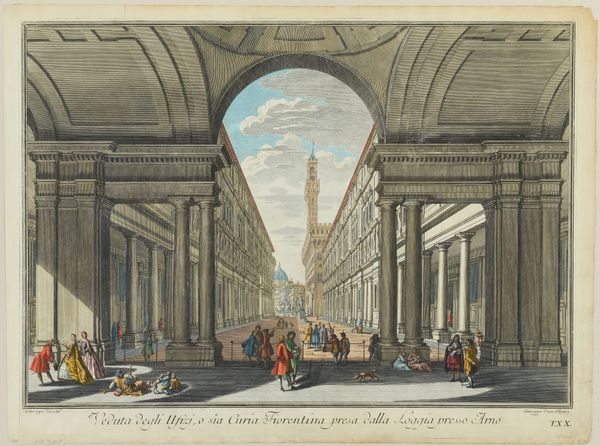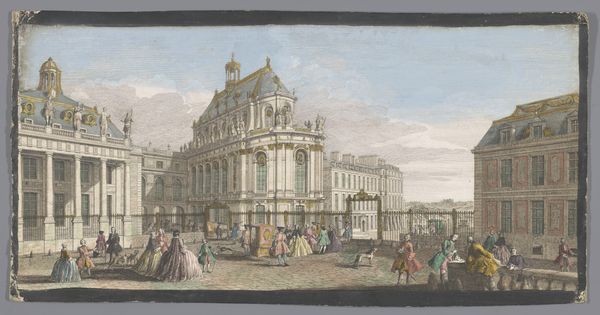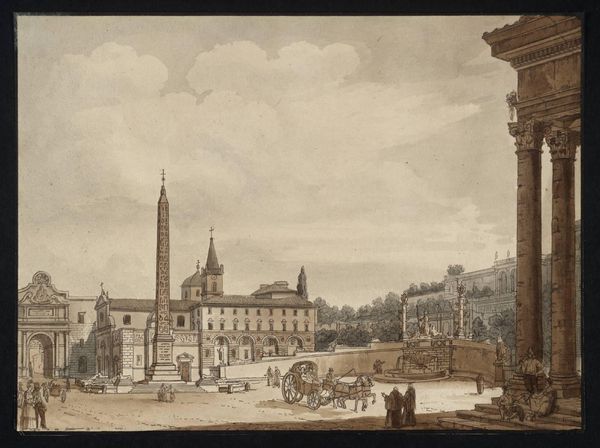
Gezicht op de Tempel van Vesta, de Piramide van Cestius en andere bouwwerken te Rome 1745 - 1794
0:00
0:00
drawing, watercolor
#
drawing
#
neoclacissism
#
water colours
#
landscape
#
watercolor
#
coloured pencil
#
cityscape
#
watercolor
Dimensions: height 274 mm, width 415 mm
Copyright: Rijks Museum: Open Domain
Editor: We're looking at "Gezicht op de Tempel van Vesta, de Piramide van Cestius en andere bouwwerken te Rome" – that translates to "View of the Temple of Vesta, the Pyramid of Cestius and other buildings in Rome." It was created sometime between 1745 and 1794 by Robert Sayer, using watercolor and colored pencil. It is currently housed at the Rijksmuseum. There’s a strange stillness to this cityscape despite all the figures populating it, and it is meticulously rendered. How do you interpret this work? Curator: As a materialist, I find it fascinating to consider this drawing not just as a depiction of Rome, but as a document of 18th-century artistic production. Think about the pigments: where did they come from? Who ground them? Watercolors and colored pencils were becoming increasingly accessible then, affecting who could create images and how. Notice the print-like quality. Do you think it was made to sell, reproduce? Editor: It does seem almost mass-produced. It lacks the unique hand of the artist, even. So, was this a form of proto-tourism, providing images for those who couldn't travel themselves? Curator: Precisely! The availability of relatively inexpensive prints like these democratized the experience of seeing Rome, turning cultural capital into something more readily consumed. Consider the paper, too – its sourcing, its cost, the labor involved in its production. All of that contributed to the artwork’s availability and its impact on visual culture. It blurs the line between art and commodity. Editor: So it’s less about the grand buildings and more about how this image became accessible to the public? Curator: Exactly. Neoclassicism is generally associated with the revival of classical ideals. Here, those ideals are commodified, circulated through these material means. It prompts us to question who gets to access high culture and how their perception is molded by the availability of reproductions. Editor: I see what you mean. Thinking about the materials really changes how I look at this. I had focused on the scene itself, but now I understand how the image functions as a material object within a specific social context. Curator: Indeed. Materiality allows us to understand the socio-economic context shaping not just the artwork’s subject, but its very existence.
Comments
No comments
Be the first to comment and join the conversation on the ultimate creative platform.
